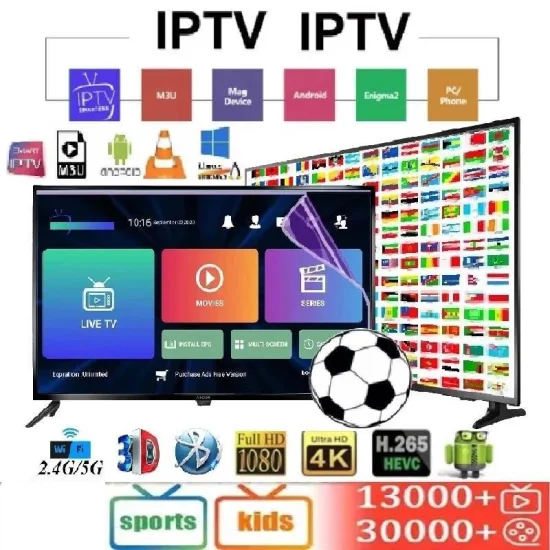Accessibility Costs Web Content: IPTV Subscription Program Tailored to You
Accessibility Costs Web Content: IPTV Subscription Program Tailored to You
Blog Article
Exactly How IPTV Functions: A Step-by-Step Guide to Net Procedure Tv Modern Technology
Web Method Tv (IPTV) has actually reinvented the way we consume tv web content, using a brand-new realm of opportunities through the power of the net. Recognizing the ins and outs of just how IPTV functions can clarify the modern technology that drives this ingenious form of media distribution. From the essential principles of IPTV to the complicated process of material distribution, each step plays a critical role in making certain a seamless viewing experience. In this guide, we will certainly uncover the underlying systems that make IPTV a fascinating combination of innovation and home entertainment.
IPTV Essentials
In comprehending IPTV essentials, it is critical to realize the basic functions of this technology in delivering television web content over the net. IPTV, which means Net Method Tv, makes use of Net Protocol (IP) networks to transfer tv web content to users' devices. Unlike conventional approaches of broadcasting television content via wire or satellite signals, IPTV streams media with high-speed net links.

Additionally, IPTV enables interactive capacities, such as video clip on demand (VOD) and digital program overviews (EPG), improving the user experience by offering even more control and versatility in accessing web content. Overall, comprehending the essentials of IPTV sets the structure for exploring its advanced capabilities and the benefits it offers to contemporary tv usage.
Web Content Shipment Refine
Reliable web content distribution in IPTV systems includes a well-structured process that makes certain smooth transmission of tv content over IP networks. The material shipment process in IPTV starts with the production of the video clip content, which is then inscribed into electronic format appropriate for IP transmission.

Middleware Performance
With the integration of middleware, IPTV systems gain improved capability that improves user interaction and content monitoring. One of the essential functions of middleware in IPTV is to make it possible for personalized user experiences by giving functions such as interactive program guides, video-on-demand services, interactive advertising, and customer choices monitoring.

Device Compatibility
Offered the essential function of middleware in making check my site it possible for seamless communication and web content management in IPTV systems, an important aspect to consider is the compatibility of gadgets made use of for accessing the IPTV services. Device compatibility is vital for making certain a smooth customer experience and optimal efficiency when accessing IPTV web content.
In the context of IPTV, device compatibility refers to the ability of a tool to successfully interact with the IPTV service, show content appropriately, and support the necessary protocols and codecs for streaming video content over the internet. Various devices, such as smart Televisions, set-top boxes, smart devices, tablet computers, and computer systems, might have differing degrees of compatibility with IPTV services.
To guarantee a seamless viewing experience, it is essential for users to webpage pick tools that work with the details IPTV service they are utilizing. Furthermore, IPTV provider must provide support for a vast array of tools to provide to the diverse needs of their user base. By focusing on gadget compatibility, both customers and company can improve the general IPTV experience.
Top Quality of Solution (QoS)
Taking into consideration the essential duty of keeping a high standard of performance and integrity in IPTV systems, guaranteeing consistent Top quality of Service (QoS) stays a fundamental aspect of the user experience. QoS in IPTV describes the capability of the system to supply content with marginal disruptions, high resolution, and fast loading times. To attain optimal QoS, numerous factors require to be dealt with. Network data transfer is important to sustain high-grade video streaming without buffering view or pixelation. Additionally, latency, jitter, and packet loss must be minimized to improve the viewing experience.
Provider utilize QoS devices such as traffic prioritization, buffering, and error modification to preserve a secure IPTV solution. By focusing on IPTV web traffic over less time-sensitive data, service providers can ensure smooth playback even during height use hours. Buffering helps make up for network changes, while error modification methods boost data stability.
Constant monitoring and optimization of QoS criteria are vital to adjust to changing network problems and customer needs. Eventually, a durable QoS structure is essential for supplying a seamless and pleasurable IPTV experience to users.
Final Thought
In final thought, IPTV runs with the transmission of television web content over internet method networks. Top quality of Service plays an important function in keeping the efficiency and reliability of IPTV services - IPTV subscription.
Report this page